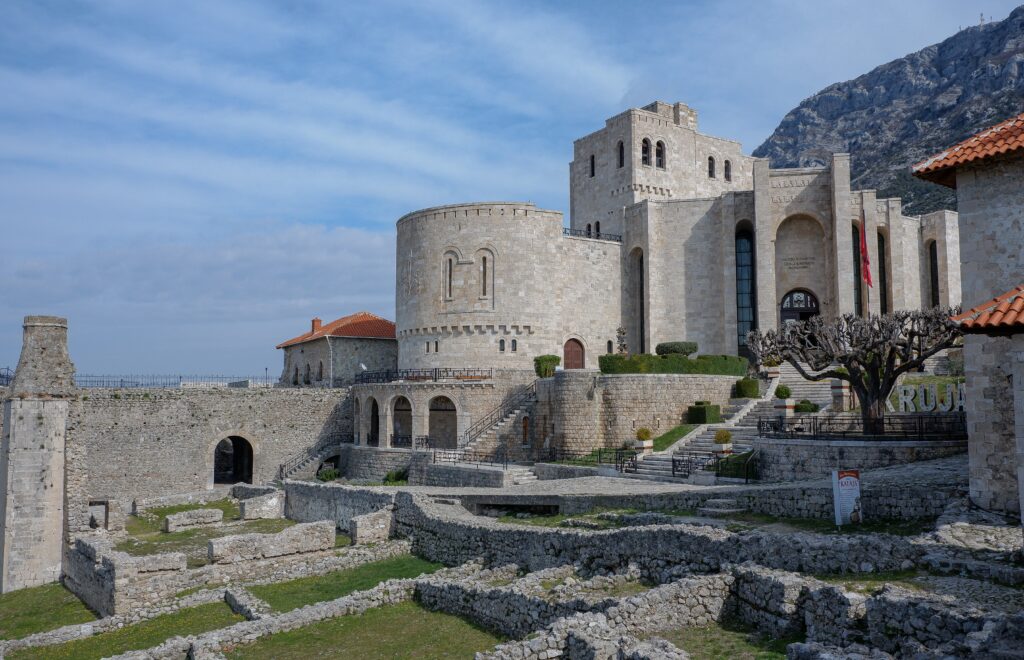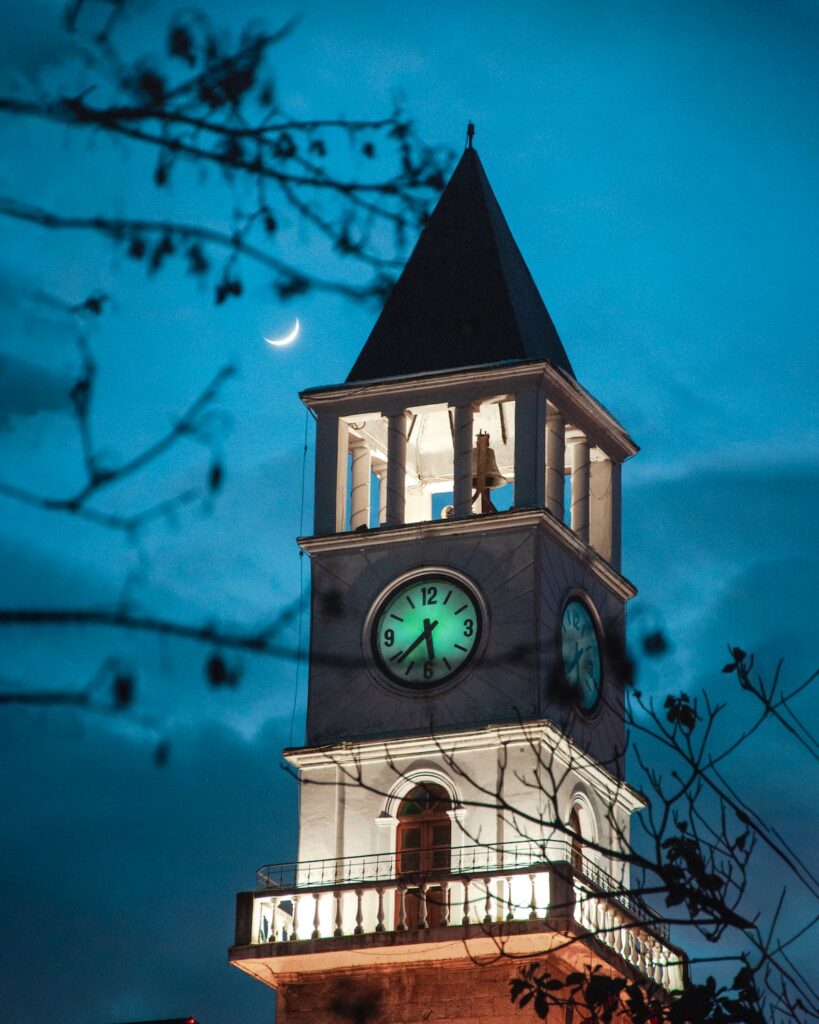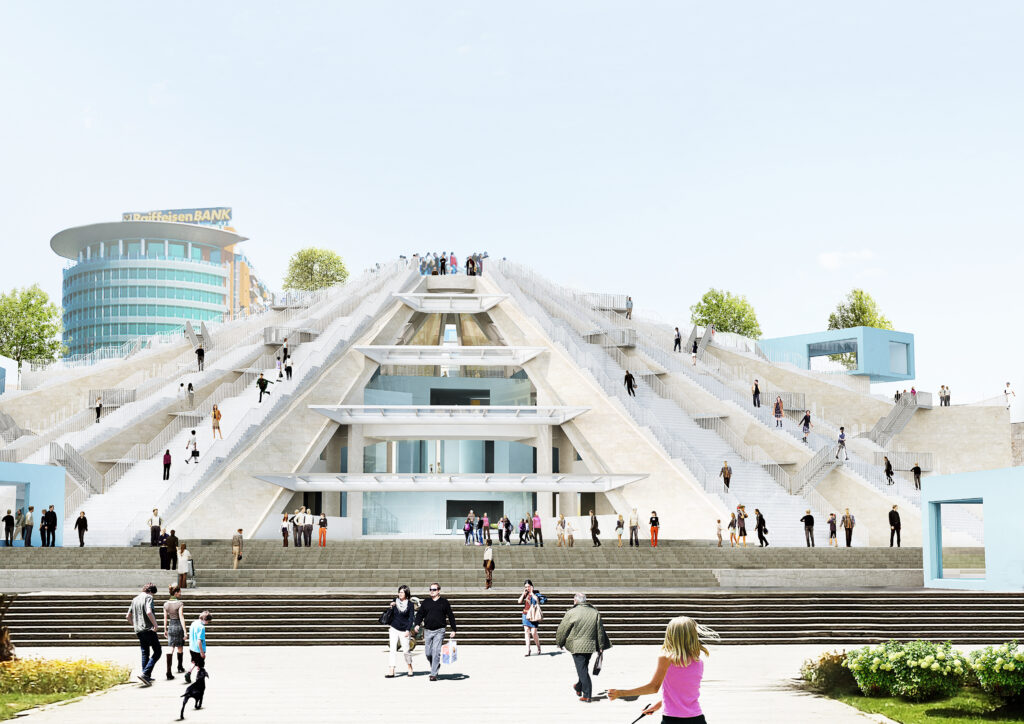Let’s embark on a brief exploration of the enchanting destinations in Albania that have been brought to life through the literary genius of Ismail Kadare, the Nobel Prize Candidate in Literature. Discover the places that Kadare has vividly described in his books, painting a rich tapestry of history, culture, and sometimes adventure.
Gjirokaster in “Chronicle in Stone”
Although it is never mentioned in the book, the city of Gjirokaster, the birthplace of the writer Kadare, was the one that inspired him to write his masterpiece “Chronicle in Stone”. The author describes this place in details, in a perspective that is rarely given to a city, with a high sensitivity to form and content. He begins the novel like this: “This was a strange city, which seemed as if it had come out of the valley suddenly one winter night like a prehistoric being and, climbing with great difficulty, had been sewn to the mountain side.” A little further down, Kadare writes: “This was a steep city, perhaps the steepest in the world, which had broken all the laws of urban planning.” Gjirokastra, today a heritage protected by UNESCO, is an amazing destination for its architectural features, but for those who have read the novel “Chronicle in Stone”, it is an even rarer experience, because you understand better and more deeply everything that is written in it.

Kruje in “The Castle”
In this book, Kadare makes us travel back in time. He narrates a story of the 15th century, during the war between the Albanians. The location is the city of Kruje. The novel does not contain chronological data that would facilitate access to a historical context. However, the siege of Kruja is naturally presented to the reader. This is because of the mention of the name Kastriot, which automatically makes us look from the era of Skanderbeg, thus imagining the time that is being talked about in the book. Our National Hero, Gjergi Kastrioti, is not among those trapped in the castle, he is outside the scene of the siege. We are lucky to have so many traces of the history of Skanderbeg in Kruje today, and of the State of Arber too, that you can discover at the Kruje Museums anytime.

Tirana in “A girl in Exile” (E Penguara)
Naturally Tirana would be an important part of Kadare’s books as he spent a long time of his life there and still lives now. His youth love stories, his relationships were somehow neglected in his first novels but later on we started knowing the author even on a more sentimental scale. The locations you will find in “A girl in Exile” in Tirana involve “Kafe Flora”, a very famous coffee shop in the center of the city, at the starting point of “Rruga e Durresit”. The coffee shop is still there and welcomes mainly the nostalgic part of the locals. Other locations you find in this novel are the crossroads of the Skanderbeg Square, the pavement near “Hotel Dajti”, which is now replaced with another building but you will find the precise area near the “National Art Gallery”.

“The Pyramid” in Tirana
Initially, the story takes place in the Ancient Egypt, when the pharaos used to build their graves in the shape of a piramyd, but it is all an allegoric way to talk about the Albanian dictator Enver Hoxha and the pyramid he wanted built for him at the center of Tirana. At the same time, the construction of the largest grave ever erected reaches Kadareja in a symbol of megalomania and misanthropy of a totalitarian rule, as his homeland, Albania, experienced from 1944 to 1985 under the communist dictator Enver Hoxha. Still, Kadareja was too close to the secret of power, to discern that dictators as pushers are always driven—the system of hubris and fear, loyalty and betrayal, surveillance and punishment threatens to topple and turn against the creator. You could see the original constraction of the Pyramid a few years ago, but it has now changed due to a new project dedicated to the youth of Tirana.

“3 Arched Bridge” based on the legend of Rozafa
The legend of Rozafa is one of the oldest and probably one of the most famous in Albania. Kadare seems to be continually trying to explore beyond the myths and create his version of the story. Such is the novel “3 Arched Bridge” bringing many similar elements as the popular ballad. The narrator of the work is the monk John. Under his hood is hidden a real character, the ecclesiastic John Buzuku, who, in 1555, wrote the first book in the Albanian language, “Meshari”. Kadare makes the monk Gjon live two centuries before Buzuku, around the year 1378. The Ottoman Empire tightens the Albanian principalities in its grip. The book is interesting to read even today, especially for those who plan to visit Shkodra and Rozafa Castle soon, for you will discover more about the old ballad.



